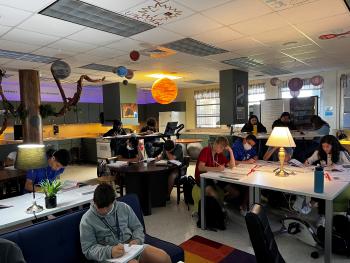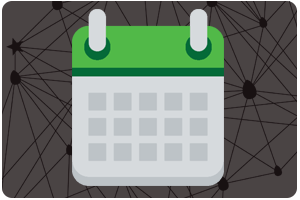
The Language of Science

- School:
- Oakridge Middle
- Subject:
- Science
- Teacher:
- Maria Hill (LaRocco)
- Students Impacted:
- 100
- Grade:
- 8
- Date:
- July 29, 2022
Investor
Thank you to the following investor for funding this grant.
Suncoast Credit Union - $1,956.77
Original Grant Overview
Goal
Last year, when my school saw an influx of eighth grade English language learners (ELLS) from many countries around the world, the decision was made to cluster the students into one period for science. We effectively created an environment where these students, their struggles and successes were the norm. They could take risks and face the challenges of language and cultural acquisition together, with academic and social support. The result was a group of students who dominated the district in their science test scores. A key component to their success was the utilization of hands-on activities that allowed them to forge the connection between language and experiences. As a result, we will be implementing this methodology again. My goal is to utilize this grant to provide my English Language Learners with hands-on activities that will allow them to make connections between their native language, real-world hands-on experiences and their new language.
What will be done with my students
When my ELLs enter the classroom this year, they will immediately be immersed in a learning environment that balances language acquisition and hands-on activities, as research demonstrates the interconnectedness of the ideas. The more real-world activities my students have with science ideas, the better they will understand and develop the language associated with the skill set.
One example of this learning is an inquiry lab associated with the periodic table. Think back to when you started your chemistry instruction back in middle school. The periodic table was something that hung on the wall; it was referenced, reviewed and maybe memorized. Imagine trying to do that without fluency in the language used on the periodic table or the language used to explain and describe it. A task that an average student might find marginally interesting and definitely challenging has now become insurmountable. Instead, students in our science ELL cluster will start off by testing the reactivity of different elements and then grouping them based on the reactions they see. The students will essentially be recreating the periodic table based on hands-on experiences. They will be able to connect the elemental name, the actual sample of the element, and the reactivity of the element to its group/family and its placement on the periodic table.
These types of experiences ensure science is accessible to these students. ELLs need to have access to many different tools succeed and this grant will provide many of these physical tools. My ELL science cluster will have the opportunity to participate in hands-on activities and inquiry labs for each of the state required standards, as well as the review standards that will be tested at the end of eighth grade on the State required SSA.
Benefits to my students
Research demonstrates that hands-on activities let the students' minds grow and learn based on the experiences and the environment they are exposed to. Students in our science ELL cluster will learn while discussing, investigating, creating, and discovering with other students. As the students become familiar with the standards they are learning, they will begin to make decisions, requiring less teacher support and allowing more interactive learning experiences to occur (Cooperstein & Kocevar-Weidinger, 2004).
Students will also benefit in the following ways:
The abstract will become more concrete: Students will be able to physically manipulate materials, allowing abstract concepts in science to become clearer and more concrete.
Linguistic demand will be reduced: Students will be able practice and show what they know using less language, relying on movement and manipulatives in addition to reading, writing, listening and speaking.
Active engagement will be encouraged: When students are using manipulatives or are involved in hands-on activities, they will be more highly engaged. This type of engagement is visible and it allows me to observe the students' involvement with the material and concepts.
Creativity, collaboration and communication: Depending on the particular activity, students will be encouraged to be creative with materials they are using, such as when they are building a model or creating an artistic representation of a concept. If students are working in partners, teams or small groups, collaboration and communication are also involved. Communication is also included when students write or speak about the activity.
Activities will access differing areas of the brain: As students use their hands to build, sort or otherwise manipulate materials, different areas of the brain are activated. When we add in reading, writing, listening and speaking, a variety of areas of the brain are activated.
Budget Narrative
Weight Boats - https://www.carolina.com/lab-balances-scales/weighing-boats-plastic-3-516-x-34-in-pack-500/702332.pr Cost: $43.40
Density Set - https://www.carolina.com/density-measurement/density-determination-set-aluminum/752510.pr Cost: $58.00
Periodic Table: https://www.carolina.com/inquiries-in-science-chemistry/inquiries-in-science-interpreting-the-periodic-table-kit/251203.pr Cost: $254
Refill: https://www.carolina.com/inquiries-in-science-chemistry/interpreting-the-periodic-table-kit-refill/251253.pr Cost: $188
Reconstructing Atomic Theory Lab: https://www.carolina.com/inquiry-science-matter/inquiries-in-science-reconstructing-atomic-theory-kit/251219.pr Cost: $170
Refill: https://www.carolina.com/inquiries-in-science-chemistry/inquiries-in-science-reconstructing-atomic-theory-kit-refill/251269.pr Cost: 61.15
Red, White and blue Chem reactions https://www.wardsci.com/store/product/8874834/ward-s-chemistry-forming-red-white-and-blue-demonstration Cost $49.99
Light energy: https://www.wardsci.com/store/catalog/product.jsp?catalog_number=470190-690 Cost @129.99
Items
| # | Item | Cost |
|---|---|---|
| 1 | Weight Boats | $43.40 |
| 2 | Density Set (5) | $290.00 |
| 3 | Periodic Table Inquiry Set | $254.00 |
| 4 | Periodic Table Refill Set (2) | $376.00 |
| 5 | Reconstructing Atomic Theory Lab | $170.00 |
| 6 | Reconstruction Atomic Theory Lab Refill (3) | $183.45 |
| 7 | Red, White and Blue Chemical Reactions (5) | $249.95 |
| 8 | Light Energy Lab (3) | $389.97 |
| Total: | $1,956.77 |



Share
Please share this page to help in fulfilling this grant.
Email to a Friend